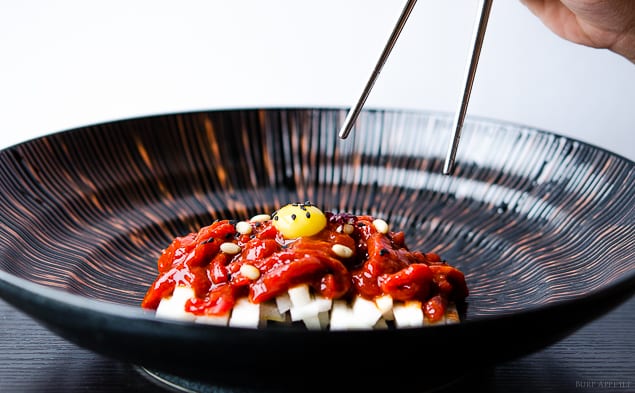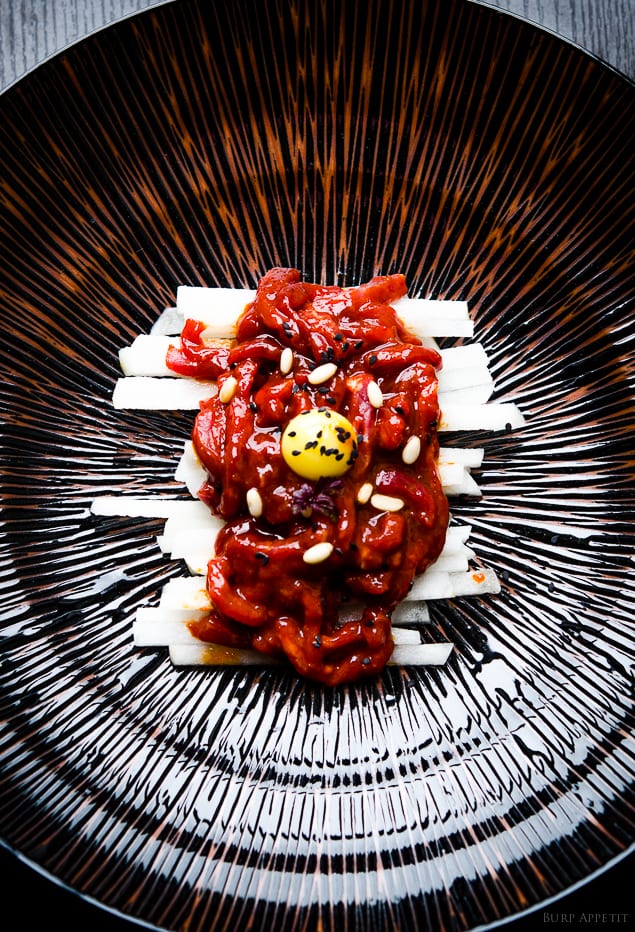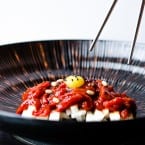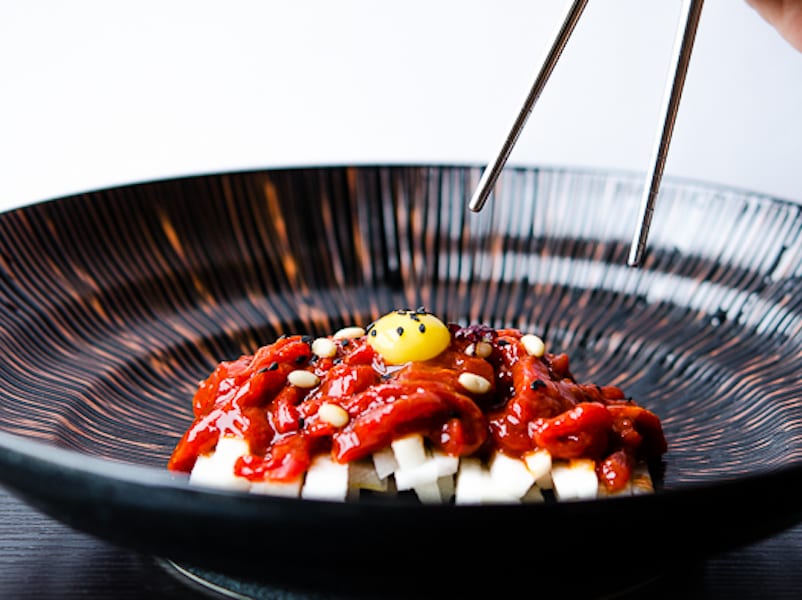The best thing in foodie life is to enjoy what nature has to offer…in its very own natural form, even raw. Try this version of Korean beef tartare.
By Josephine Chan



In our culture, eating raw food is not an everyday affair. My first encounter with raw food was a platter of fresh, raw, perfectly sliced salmon and tuna sashimi, paired simply with nose-numbing eye-shooting wasabi and shoyu. I love it. I love the flavour – so fresh and fishy. I love the texture.
And ultimately, that kickstarted my love affair with raw food. Gradually, my taste bud expands to other seafood and also beef. Do you remember your first love affair? … ahem, I mean with raw food :)
With beef, I always prefer mine medium rare – warm red in the middle and slightly firm. I get really annoyed when a restaurant can’t get this basic thing right – especially when it was a piece of damn good aged steak.
But sometimes, I don’t mind them all rare especially when dealing with high quality beef. Of course, it takes me a while to appreciate the act of eating rare beef. When it comes to this, steak tartare and beef carpaccio are the most common type of dishes served with rare beef. Although steak tartare is very much a European dish, I’ve decided to take a Korean turn with this dish and it turned out amazing!
Recipe is adapted from Our Korean Kitchen
Print
Sesame, Soy & Chilli Beef Tartare (Yukhoe)
- Yield: 2 1x
Description
Flavoursome and very very raw – a great start to an indulgent 3-course meal.
Ingredients
- 200 g good quality beef fillet (chilled)
- 1/2 nashi pear (peeled and cored)
- 2 quail eggs (yolks only)
- pine nuts
- 1/2 tsp black sesame seeds
- 3 tsp gochujang (red pepper chilli paste)
- 1 1/2 tsp soy sauce
- 4 tsp roasted sesame seed oil
- 2 1/2 tsp honey
- 2 garlic cloves (crushed)
- thumb of ginger (finely grated)
Instructions
- Place the beef in the freezer for 1 hour. This method improves the texture of beef and makes it easy to slice. With a sharp knife, slice the beef into fine thin strips. Place them into a mixing bowl.
- Mix gochujang, soy sauce, sesame seed oil, honey, garlic and ginger in a bowl until well combined. Then combine with the beef and mix well.
- Chop nashi pear into batons. Divide and arrange on 2 serving plates. Place the beef on top of the pear strips. Scoop egg yolk and gently place on top of the beef. Scatter black sesame seeds and pine nuts around the dish before serving.
- Category: Appetiser
- Cuisine: Korean














